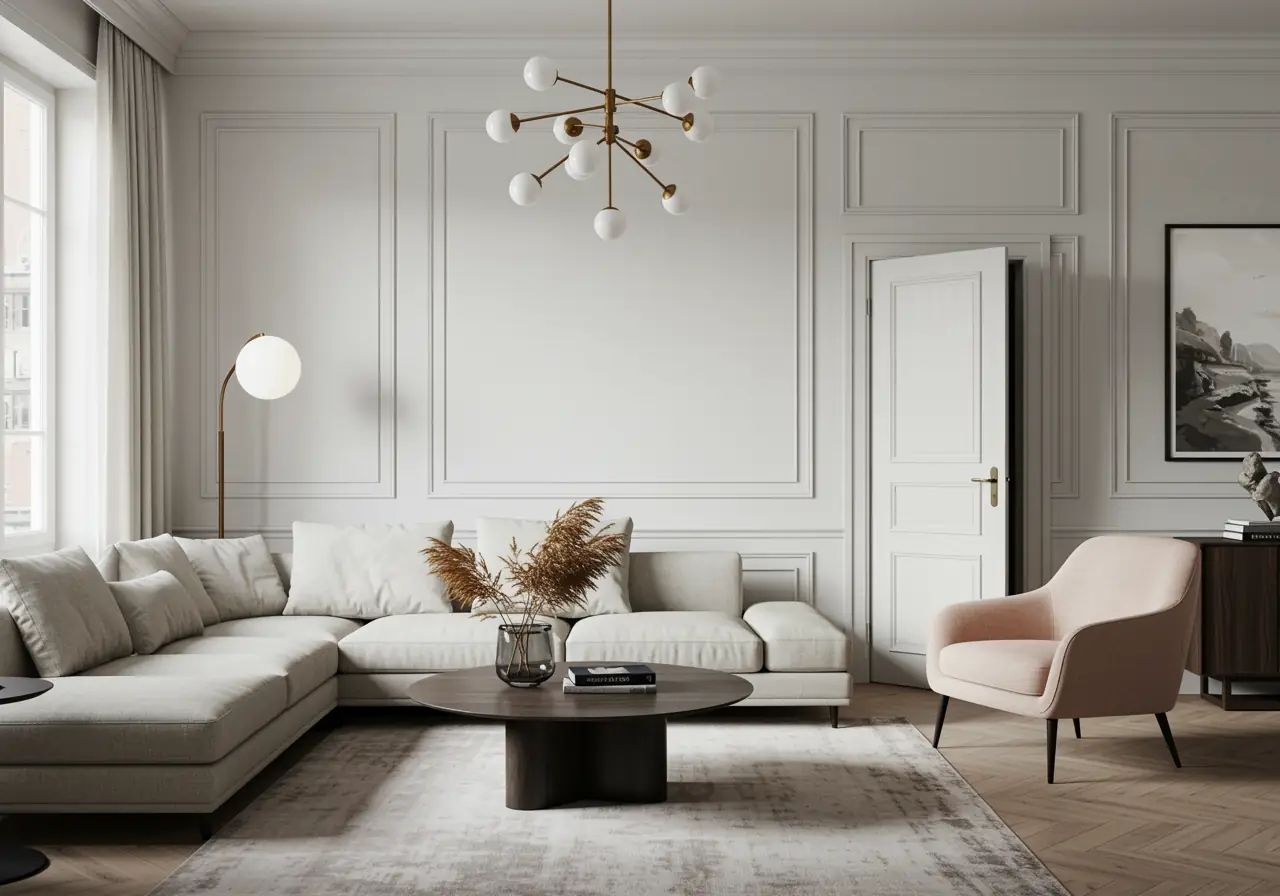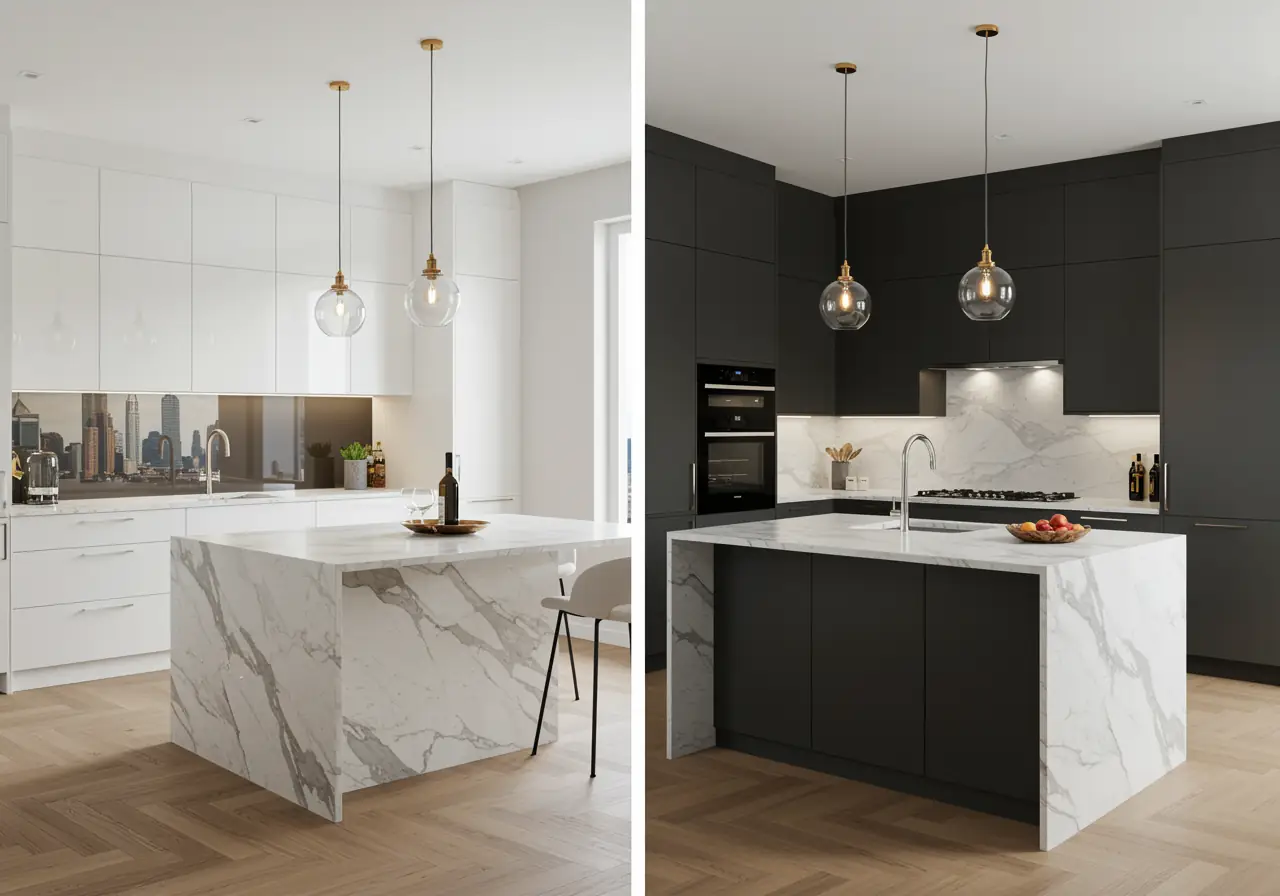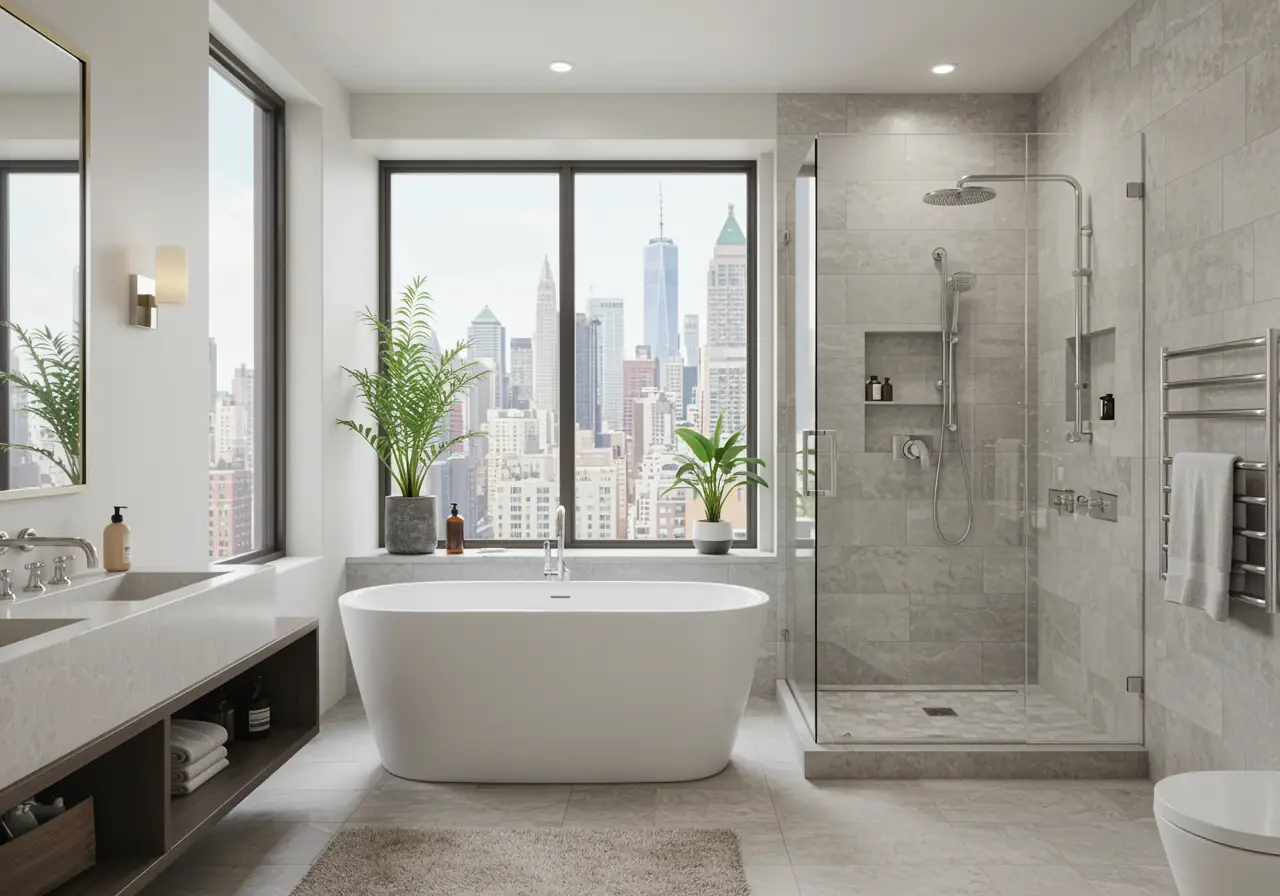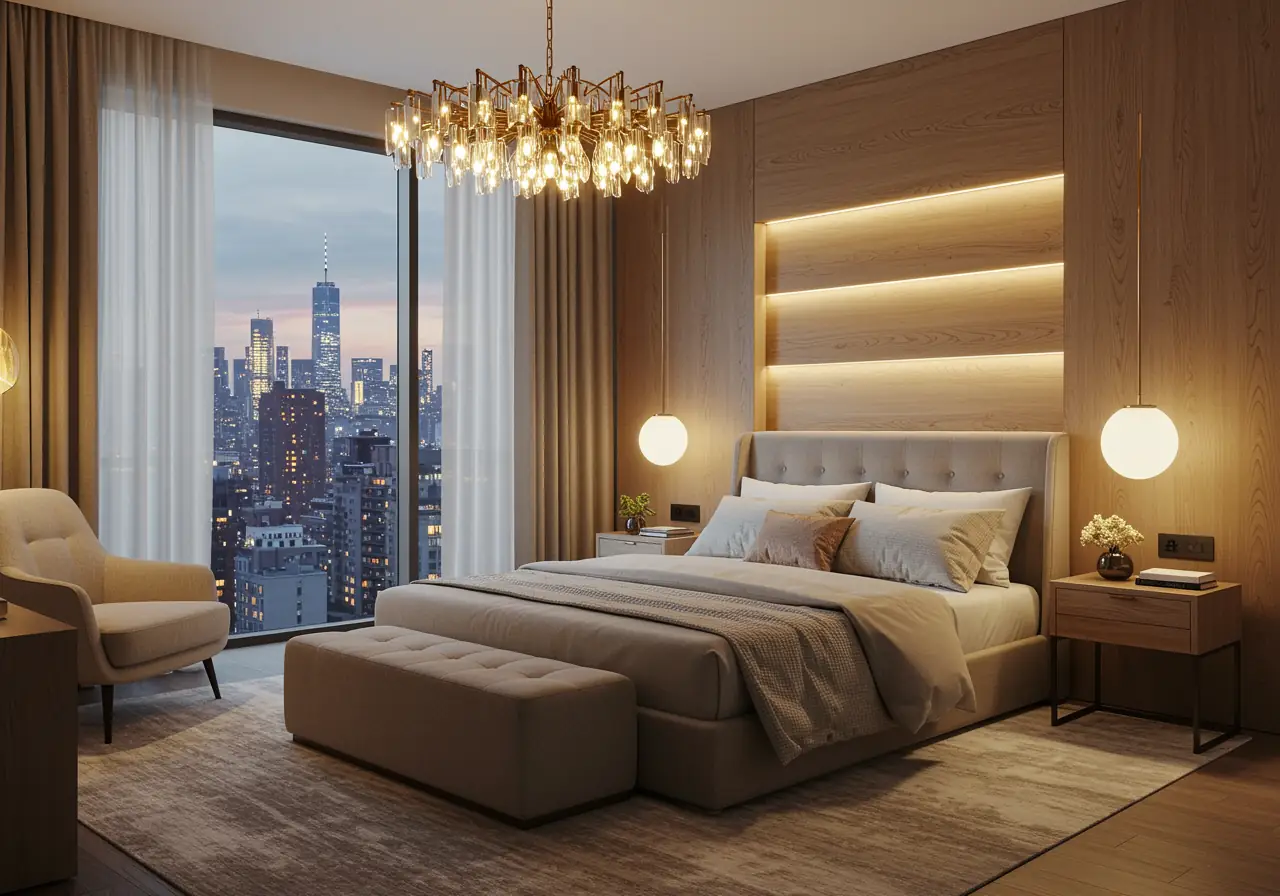Is Open Kitchen Design Outdated? Manhattan 2025 Hybrid Kitchen Trends
In this guide, discover why open-concept kitchen design in Manhattan is experiencing an unexpected shift in 2025. Once the hallmark of luxury apartments, open-plan kitchens are being redefined as homeowners and designers seek spaces that balance connection and separation.
Modern kitchen trends now emphasize functionality, warmth, and authenticity over the all-white minimalist and farmhouse styles that once dominated. Earthy tones, natural textures, and custom cabinetry are replacing sterile finishes, while oversized kitchen islands and smart technology enhance practicality. Sustainability also drives design choices, with homeowners embracing warmer hues and visible appliances that celebrate the kitchen’s true purpose. The new Manhattan kitchen blends beauty with function - concealed yet open, stylish yet efficient.
In this guide, we’ll explore how hybrid layouts, partial walls, and innovative storage solutions are transforming open-concept kitchens into practical, elegant spaces that suit 2025 living.
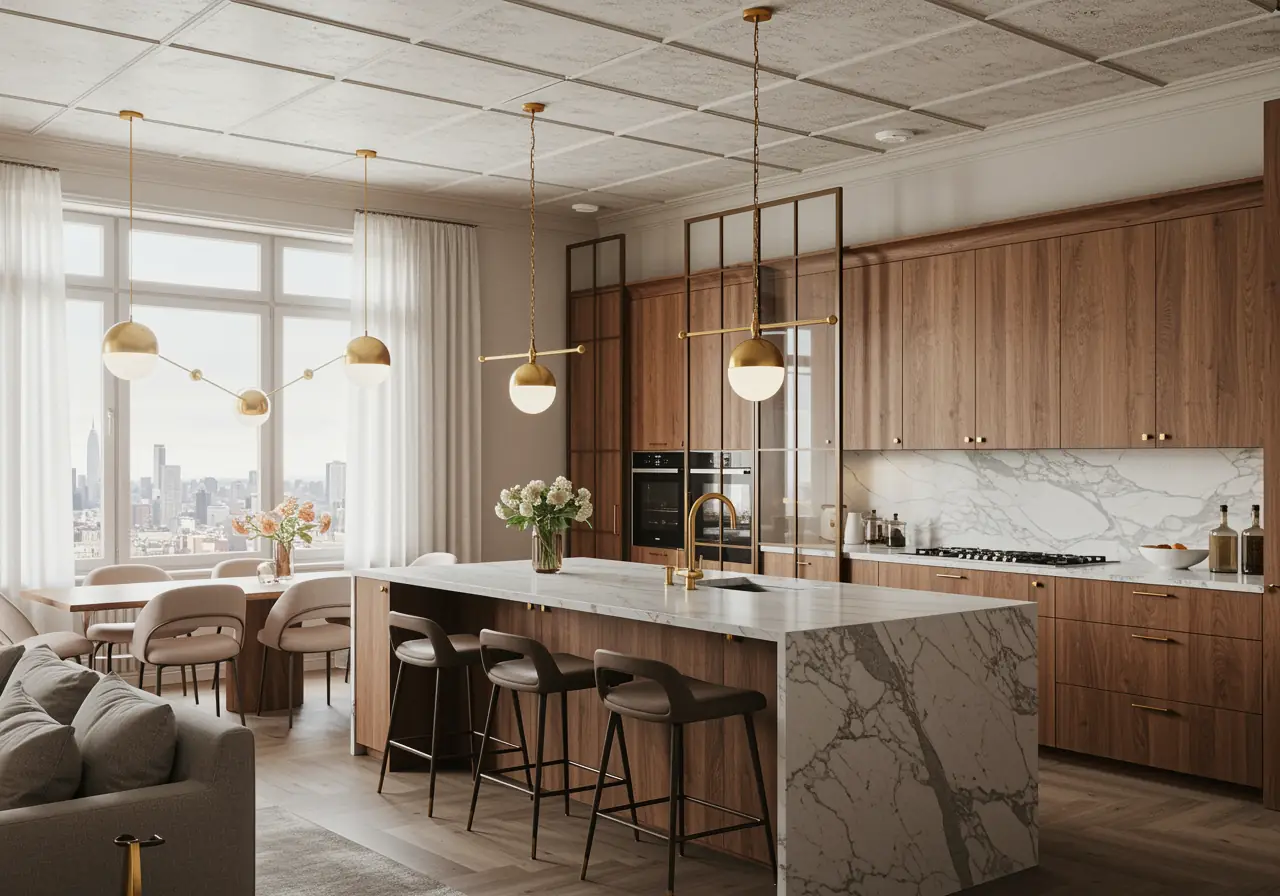
The Rise and Fall of Open Kitchens in Manhattan
For nearly forty years, the open kitchen has represented effortless modern chic in American homes, with Manhattan apartments at the forefront of this design revolution. The evolution from separated rooms to flowing spaces reflects broader cultural shifts in how we live, entertain, and interact with our homes.
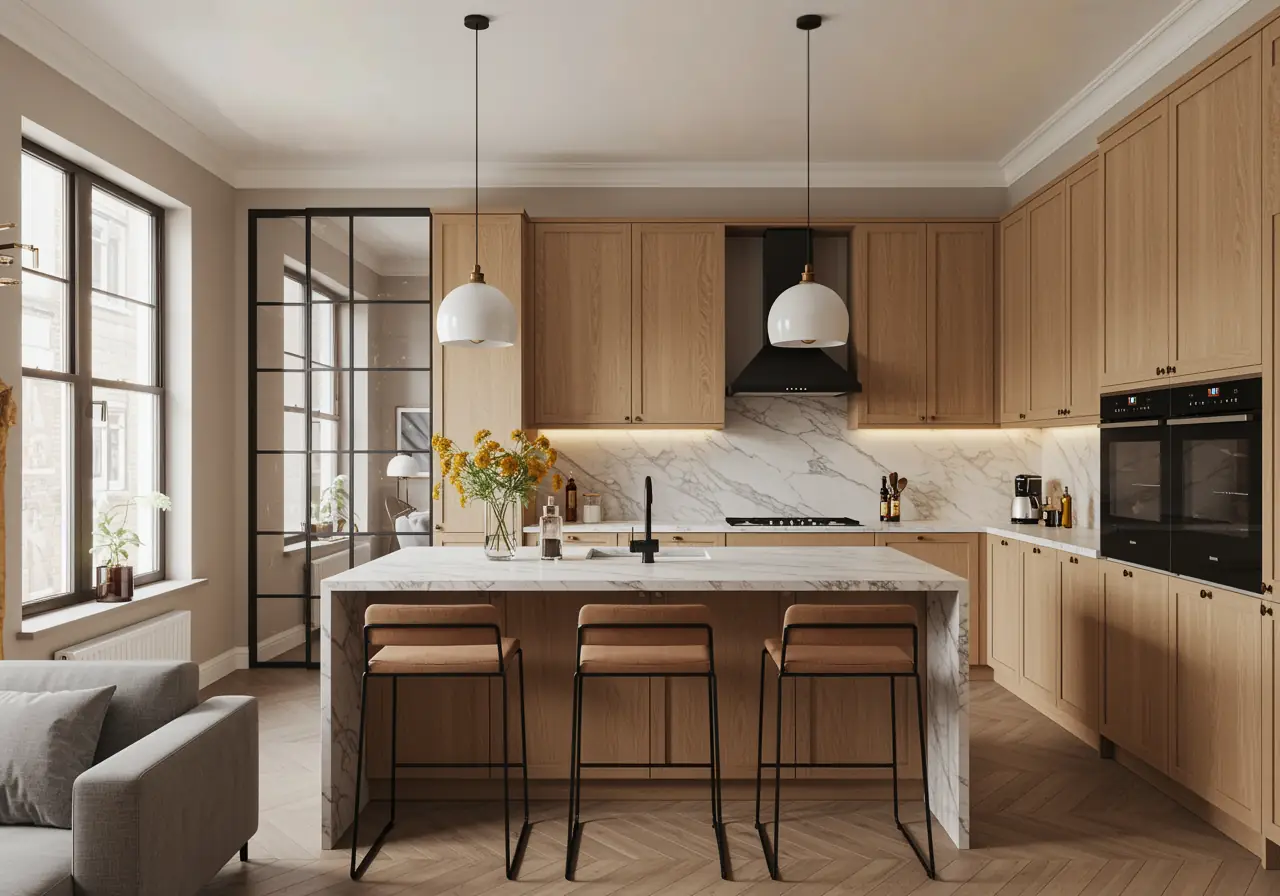
Why open plan kitchens became popular
The concept of open plan kitchens traces back to Frank Lloyd Wright's pioneering design for the Willey House in 1934, providing a blueprint for postwar society where families no longer employed live-in help. Technological advancements like stronger extractor fans meant cooking odors could be managed in shared spaces, eliminating the need for segregated kitchen areas. Furthermore, the proliferation of convenience foods reduced cooking time, making the kitchen less of a purely functional space.
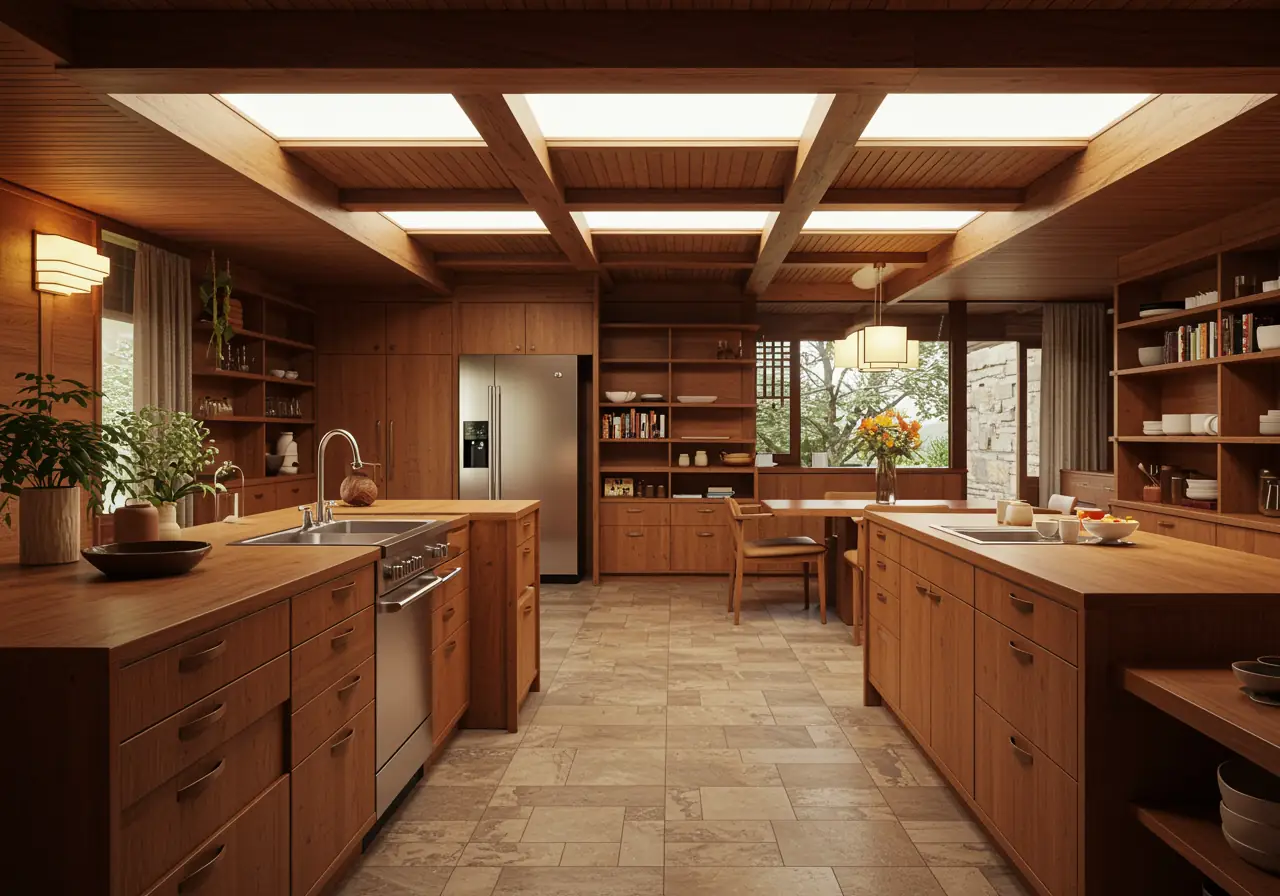
Popular culture played a pivotal role in cementing this trend. TV sitcoms featuring open kitchen layouts - with characters like Alice in The Brady Bunch conversing easily across rooms - reinforced the idea that modern living should involve fewer boundaries. Subsequently, open kitchens became showcases for status pieces like designer tea kettles and juicers, transforming functional spaces into style statements.
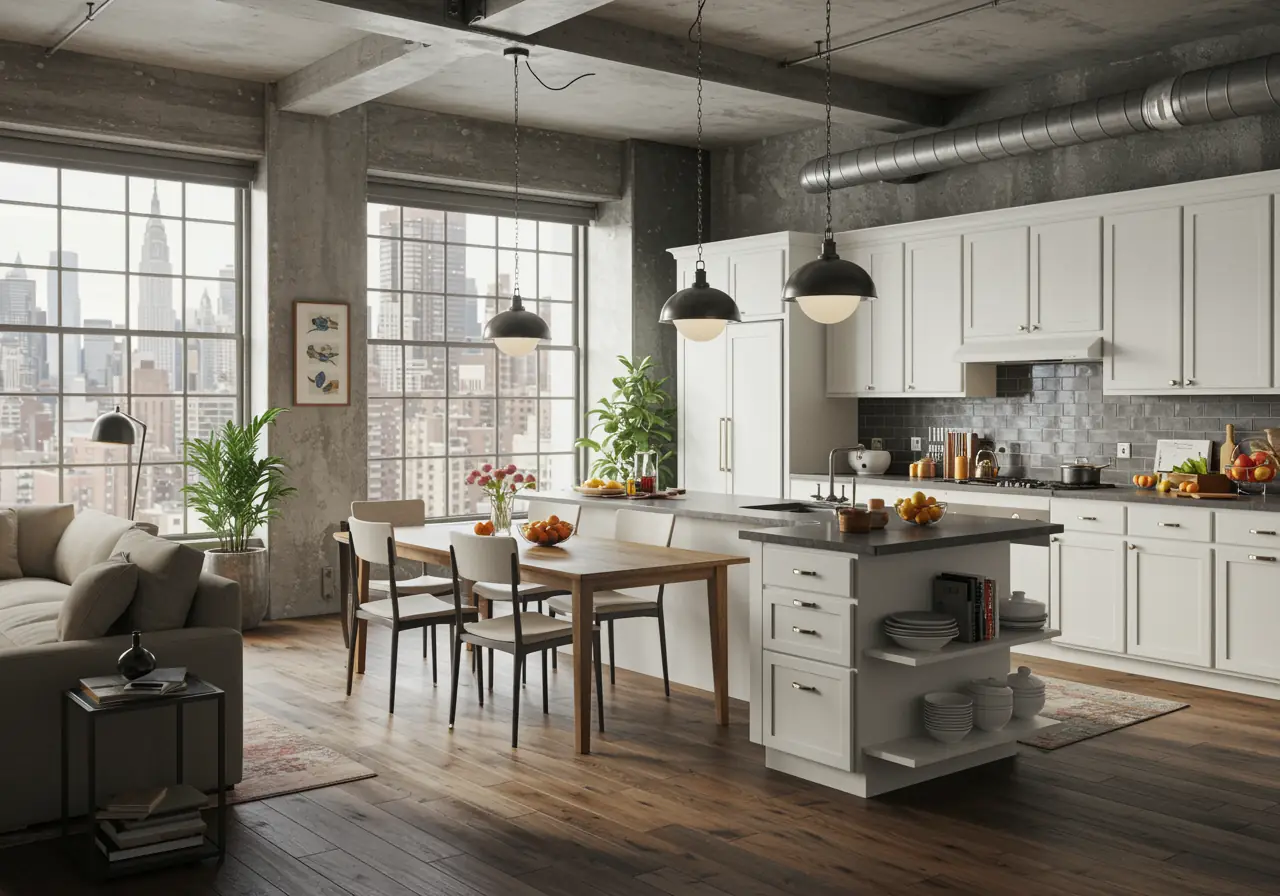
How NYC apartments embraced the trend
Manhattan real estate enthusiastically adopted open-concept kitchens as standard features in luxury developments. "Most young families prefer to open up the formal dining room and kitchen into a single 'great room,'" notes Manhattan realtor Matthew. This design approach addressed practical concerns in space-constrained city apartments, making interiors feel more expansive while maximizing natural light.
Developers of high-end properties like 520 Fifth Avenue, Maverick Chelsea, and 77 Greenwich made modern open kitchens focal points of their design visions. These spaces featured expansive arched windows, chef-grade appliances, and panoramic city views that integrated cooking areas with entertaining zones. The trend particularly flourished as more people began cooking and entertaining at home more frequently, with kitchens becoming genuine social hubs.
The shift in homeowner preferences in 2025
Despite predictions of its demise, the open kitchen layout initially gained even more traction in New York City apartments across all price ranges. Nevertheless, by 2025, a notable pivot began occurring in homeowner preferences. Interior designers have observed growing demand for hybrid approaches that offer the best of both worlds - social connection with practical separation.
"Given the prominent placement of kitchens, we seized the opportunity to highlight our commitment to elegant, timeless design hand-in-hand with full functionality," said Van Nguyen of JVP Management. Consequently, solutions like prep kitchens (secondary prep spaces that contain mess) and broken plan layouts with partial walls have emerged as popular compromises.
Architects now report that clients increasingly appreciate the practical advantages of defined cooking spaces: containing noise, mess, and cooking odors while allowing adjacent rooms to maintain distinct design identities. This shift represents not merely a return to tradition, but rather an evolution toward thoughtfully balanced living environments.
Transform your Manhattan kitchen with KS Renovation Group. Our team blends custom craftsmanship, smart layouts, and timeless design into every space.
8 Open Kitchen Features Falling Out of Favor
Manhattan homeowners are increasingly rejecting specific elements of open kitchen designs that once dominated the luxury market. As interior preferences evolve in 2025, these eight features are rapidly losing favor:
1. Lack of kitchen and living room separation
The absence of dividing walls, once celebrated for creating airy spaces, now frustrates homeowners seeking privacy. Many Manhattan residents are installing partial walls, glass partitions, or pocket doors to create hybrid layouts that offer the best of both worlds - connection with practical separation.
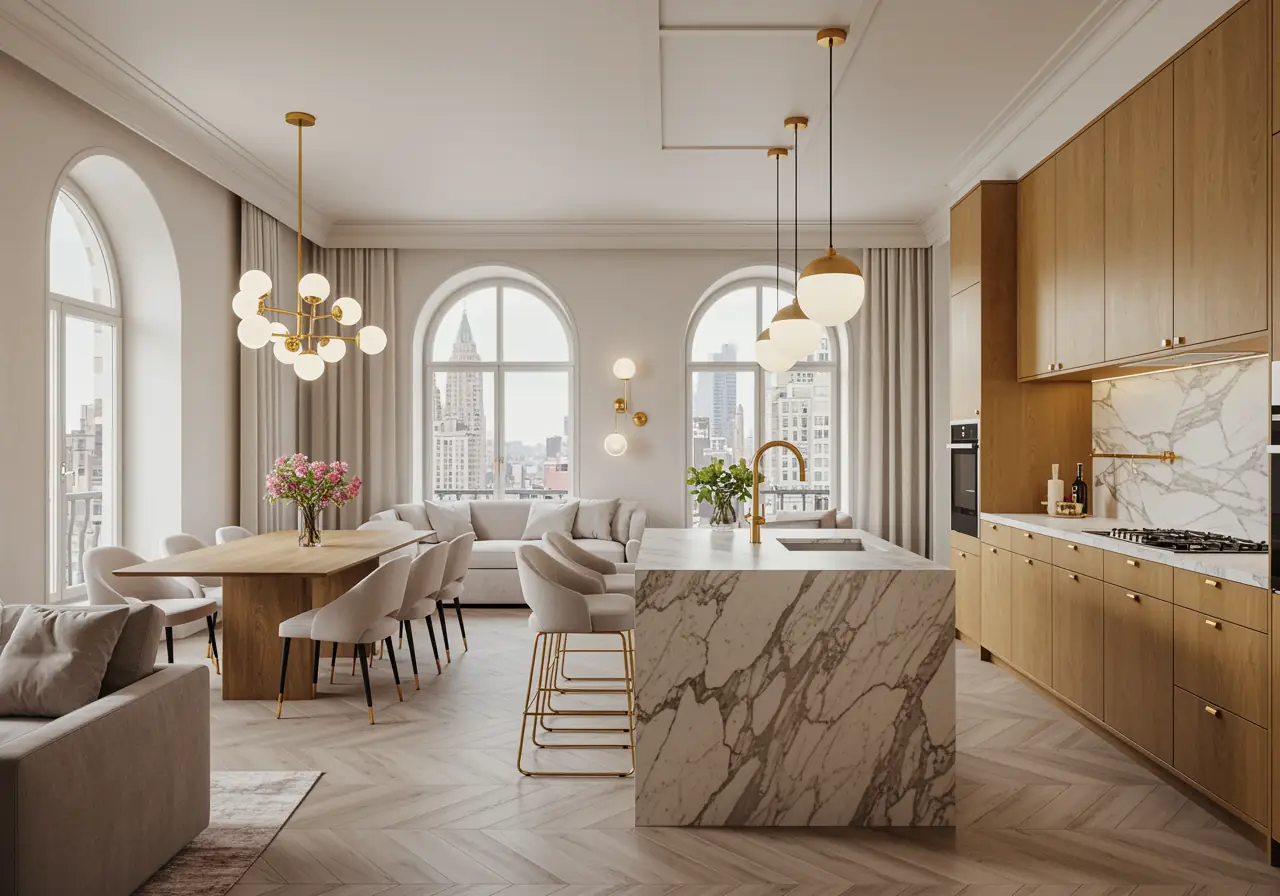
2. Noise and smell issues in open layouts
Without barriers, cooking sounds and odors travel freely throughout living spaces. "If something is burning in the oven, your guests are going to know!". High-quality ventilation systems have become essential, yet many homeowners prefer physical barriers as simpler solutions.
3. Overexposed kitchen mess and clutter
Visible kitchen chaos has become a significant drawback. "If you're a messy cook or simply prefer to keep your kitchen out of sight, maintaining constant tidiness can be a challenge". Interior designers note that clients increasingly value the ability to hide preparation messes when entertaining, leading to a rise in hidden kitchen ideas.
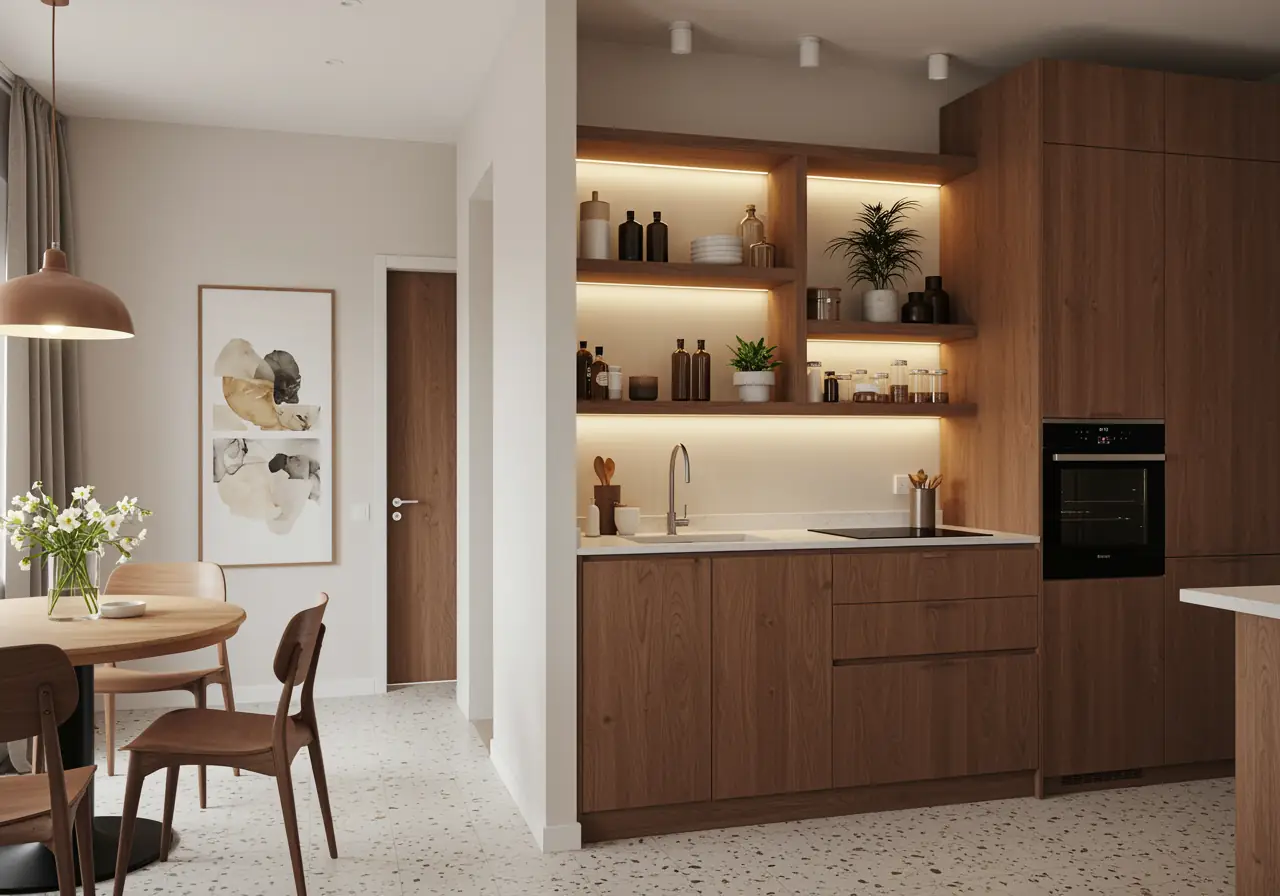
4. Minimalist kitchen style losing warmth
The stark, impersonal esthetic that defined minimalist open kitchens now feels unwelcoming. "While kitchens with clear countertops and clean-lined cabinets are always ready for a photo-op, they also have the tendency to look cold". Instead, homeowners are embracing warm materials like wood paneling and natural textures, incorporating diverse kitchen color schemes.
5. Overuse of kitchen islands as dining zones
Not every kitchen benefits from an island. "If your kitchen is small or has a galley kitchen layout, a freestanding island may not be practical or prudent". Manhattan apartments with space constraints are opting for peninsula designs or wall-mounted fold-down tables as more functional alternatives.
6. Uniform finishes and sterile esthetics
The all-white, clinical look that dominated open kitchens feels outdated in 2025. "Hard surfaces can amplify sound, so adding texture will help reduce this effect". Designers are introducing varied textures and warmer finishes to create more inviting atmospheres, often incorporating innovative kitchen hardware.
7. Poor acoustic planning in open spaces
Sound management has become a defining element of modern interior design. While open floor plans still evoke a sense of connection and flow, the realities of daily life - children playing, music reverberating, conversations overlapping, and appliances humming - can quickly turn harmony into chaos. To counter this, Manhattan’s top designers are integrating sophisticated acoustic solutions and thoughtful spatial zoning. From sound-absorbing wall panels to strategically placed partitions, these innovations preserve the elegance of open living while restoring the tranquility essential to refined urban homes.
8. Overreliance on open shelving
Once trendy, excessive open shelving has fallen from grace. "Open shelving has been a popular trend for showcasing dishware and decor items, but in 2024, it's time to rethink this design choice". The maintenance requirements and constant styling needs have pushed homeowners toward glass-front cabinets as more practical alternatives, with some opting for concealed kitchen appliances to maintain a sleek look.
Manhattan homeowners are moving away from outdated open-kitchen features like all-white finishes, oversized islands, and lack of separation. The 2025 trend favors warmer materials, hybrid layouts with glass partitions, and smart acoustic design for peaceful living. Explore how KS Renovation Group can help you create a kitchen that’s modern, functional, and built for timeless elegance.
What's Replacing the Open Kitchen Trend in 2025
As open kitchen fatigue sets in across Manhattan, innovative solutions are emerging that balance connectivity with functionality. Designers now focus on versatile spaces that can transform according to homeowners' needs throughout the day.
Hybrid kitchen layouts with partial walls
The contemporary answer to the open kitchen dilemma comes in the form of partial walls that create visual separation without completely closing off spaces. These half-height or three-quarter walls offer the perfect middle ground - maintaining sightlines while containing cooking messes and noise. Moreover, these dividers often incorporate functional elements like built-in shelving or seating on the living room side, contributing to a broken plan layout.
Glass partitions and sliding doors
Throughout Manhattan, transparent boundaries have gained tremendous popularity. Crittall-style steel-framed glass partitions and bi-fold doors allow light to flow freely while creating acoustic separation. Notably, these solutions provide flexibility - doors can remain open during casual family dinners yet closed when formal entertaining demands kitchen privacy.
Acoustic panels and soundproofing solutions

Sound management has become a primary concern in kitchen design. Specialized ceiling treatments and wall panels absorb the cacophony of kitchen appliances without disrupting visual flow. Indeed, many Manhattan designers now incorporate sound-absorbing materials directly into decorative elements like textured wall coverings.
Zoned lighting and ceiling treatments
Strategic lighting now defines separate areas within connected spaces. Recessed ceiling details, pendant clusters, and architectural lighting create distinct zones without physical barriers. This approach maintains openness yet clearly delineates cooking, dining, and living functions.
Custom cabinetry for hidden storage
Bespoke cabinetry has become essential in creating streamlined, organized kitchens. Specially designed storage solutions include appliance garages, hidden pantries, and concealed organizational systems that keep countertops clear and clutter contained - addressing a major complaint about exposed open kitchens. Push-to-open cabinets and handleless cabinetry are gaining popularity for their sleek, minimalist appearance, contributing to the invisible kitchen concept.
Manhattan’s 2025 kitchens are shifting toward hybrid layouts with glass partitions, partial walls, and custom cabinetry that blend elegance with practicality. Transform your space with KS Renovation Group - experts in crafting refined, functional kitchens built for modern Manhattan living.
Designers and Data: What Experts and Buyers Say
Leading designers and real estate data across Manhattan reveal a significant shift in kitchen preferences, providing valuable insights for homeowners considering renovations in 2025.
Designer insights on functional kitchen spaces
Interior experts highlight that kitchens should blend practicality with esthetics. "Enclosed kitchens often have more wall space for storage and counter space for food prep," notes one prominent designer. First of all, functional layouts now prioritize custom storage solutions that maximize every inch while maintaining style. Naturally, built-in seating with integrated storage has become particularly desirable, especially when positioned under windows.
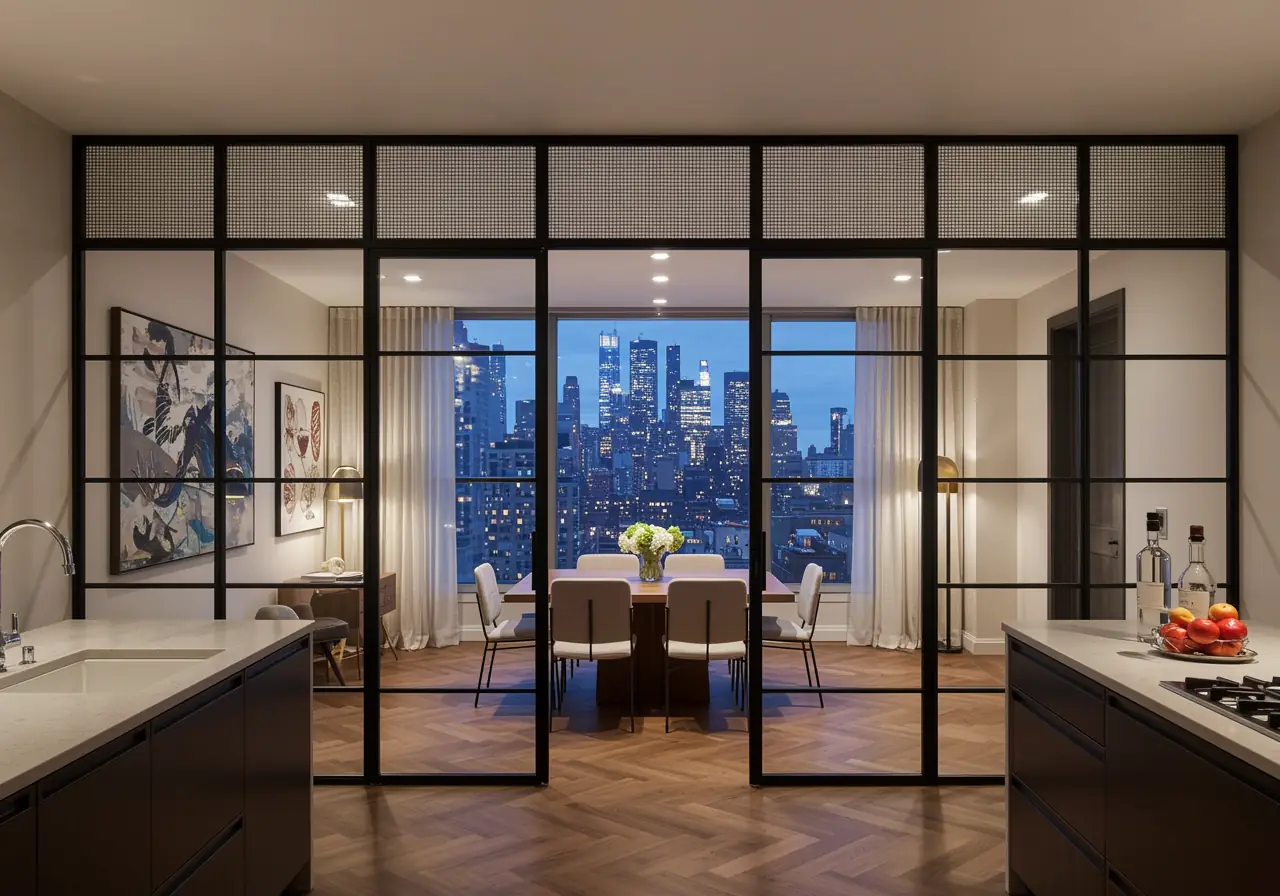
Resale value trends in Manhattan apartment remodels
Kitchen renovations continue to deliver strong returns in Manhattan's competitive market:
- Mid-range remodels yield 50-70% ROI
- High-end renovations return 50-60% of investment
Meanwhile, a newly renovated kitchen and bath can increase home value by up to 100% of renovation cost. This makes kitchen investment a smart choice for homeowners looking to boost property values.
Why closed kitchen design is making a comeback
Enclosed kitchens create distinct spaces ideal for containing mess and noise. Furthermore, homes with separate rooms were historically a sign of wealth - a perception now cycling back into fashion. Jean Liu emphasizes that "clients are now begging for privacy", especially as remote work makes noise control essential in multi-functional homes. This has led to a resurgence of back kitchen and prep kitchen concepts in larger apartments.
How luxury kitchen design is evolving
Today's high-end kitchen concepts blend "timeless esthetics, practical functionality, and superior-quality materials". Forthwith, multifunctional islands have become essential centerpieces for both cooking and socializing. Evidently, Americans spend over 1,000 hours yearly in kitchens - nearly three hours daily - making thoughtful design increasingly important. This has led to a rise in family-friendly kitchen layouts that prioritize both style and practicality, with l-shaped kitchen and u-shaped kitchen designs gaining popularity for their efficiency.
Conclusion
In 2025, Manhattan kitchen design is evolving, not disappearing. The open-concept kitchen trend is giving way to hybrid layouts that balance style, connection, and practicality. Homeowners now favor kitchens with glass partitions, partial walls, and custom cabinetry that offer both openness and privacy. Acoustic panels, smart lighting, and sustainable materials define the modern Manhattan kitchen - spaces designed for function, warmth, and timeless appeal. With mid-range remodels delivering up to 70% ROI, buyers are prioritizing functional design, hidden storage, and natural finishes over purely aesthetic concepts.
Today’s luxury kitchens focus on livability, reducing noise, containing clutter, and creating a seamless flow between cooking, dining, and living areas. In this guide, we show how the ideal 2025 Manhattan kitchen merges openness with structure, proving that true sophistication lies in thoughtful, functional design built for modern urban living.
Manhattan’s 2025 kitchen design marks a new era where beauty meets purpose. The open-concept model is evolving into hybrid spaces defined by glass partitions, custom cabinetry, and sustainable materials that enhance both function and comfort. At KS Renovation Group, we create kitchens that reflect this balance - crafted with precision, built to last, and designed to elevate the way you live every day.
Key Takeaways
Manhattan's kitchen design is experiencing a major shift in 2025, moving away from completely open layouts toward more functional hybrid solutions that balance connectivity with practicality.
• Open-concept kitchens are losing favor due to noise, cooking odors, exposed clutter, and lack of privacy during meal preparation and entertaining.
• Hybrid layouts with glass partitions, partial walls, and sliding doors are replacing fully open concepts, offering visual connection while containing kitchen chaos.
• Sound management has become critical, with designers incorporating acoustic panels and strategic zoning to create peaceful living environments.
• Kitchen renovations still deliver strong ROI (50-70% for mid-range remodels), but buyers now prioritize functional storage and defined spaces over purely esthetic open designs.
• Custom cabinetry and hidden storage solutions are essential for maintaining clean, organized kitchens that can be concealed when not in use.
This evolution represents a thoughtful balance between social connectivity and practical living, addressing the real-world challenges that made completely open kitchens less appealing over time.
FAQs
Q1. What are the emerging kitchen design trends in Manhattan for 2025? In 2025, Manhattan kitchens are moving towards hybrid layouts that balance openness with functionality. Popular features include partial walls, glass partitions, and sliding doors that offer visual connection while containing cooking mess and noise. Custom storage solutions and acoustic treatments are also gaining prominence. Modern kitchen design now emphasizes a blend of style and practicality, with hidden kitchen designs becoming increasingly popular.
Q2. Why are open-concept kitchens losing popularity in Manhattan apartments? Open-concept kitchens are falling out of favor due to issues like noise transmission, cooking odors spreading throughout living spaces, exposed clutter, and lack of privacy during meal preparation. Homeowners are seeking more defined spaces that offer both connectivity and separation, leading to a rise in semi-open kitchen layouts and broken plan layouts.
Q3. How are designers addressing sound issues in kitchen spaces? Designers are incorporating acoustic panels, strategic zoning, and sound-absorbing materials into kitchen designs. Specialized ceiling treatments and wall panels are being used to absorb appliance noise without disrupting visual flow, creating more peaceful living environments. This is particularly important in broken plan kitchen layouts and open kitchen designs.
Q4. What impact do kitchen renovations have on Manhattan property values? Kitchen renovations continue to offer strong returns on investment in Manhattan's real estate market. Mid-range remodels typically yield 50-70% ROI, while high-end renovations can return 50-60% of the investment. Some homeowners have even recouped up to 100% of renovation costs in increased home value. This makes kitchen investment a smart choice for boosting property values, especially when incorporating modern open kitchen concepts.
Q5. How are luxury kitchens evolving in Manhattan? Luxury kitchens in Manhattan are now focusing on blending timeless esthetics with practical functionality and high-quality materials. Multifunctional islands have become essential centerpieces for both cooking and socializing. There's also a growing emphasis on custom cabinetry, integrated appliances, and thoughtful design that supports the significant time people spend in their kitchens. Family-friendly kitchen layouts are increasingly popular, combining style with practicality. Concealed kitchen appliances and invisible kitchen elements are gaining traction in high-end designs, offering a sleek and uncluttered appearance.

KS Renovation Blog
Get Inspired
Meaningful information about home remodeling for the true NYC homeowners.
OUr Clients Say
NYC kitchen remodeling Projects and more



